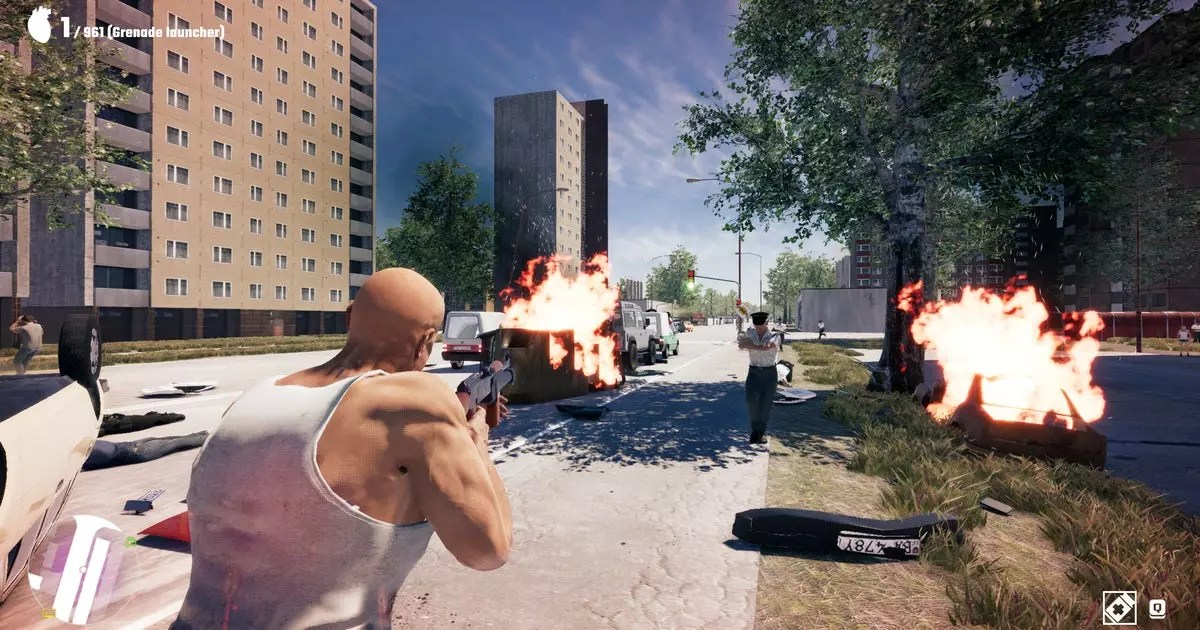The quest for a worthy contender to the iconic Grand Theft Auto series has long plagued the gaming community, with numerous titles attempting to carve out their niche in the open-world genre. Among the latest contenders is Vivat Slovakia, an early access game that vividly aims to recreate the chaotic spirit of the 1990s in Slovakia. However, after some introspective evaluation while playing the game, it is clear that Vivat Slovakia, although ambitious and intriguing, does not fulfill the lofty expectations of dethroning GTA 6.
At its core, Vivat Slovakia endeavors to immerse players in a gritty world marked by corruption and moral ambiguity. The player assumes the role of Trotter, an unlikable taxi driver with ties to law enforcement. He navigates the unpredictable streets while grappling with the ethical dilemmas that arise from his dual existence. The game’s narrative offers a stylized portrayal of Slovakia during a tumultuous political era, filled with broken institutions and rampant criminality. While this premise is ripe with potential for deep storytelling, it often veers into superficial caricature rather than nuanced exploration.
The game boasts an interesting premise: players are invited to unscramble a web of corruption and power struggles, similar to the complex narratives found in Rockstar’s offerings. Unfortunately, the execution of these themes often falls flat, and the game sometimes feels like an imitation rather than a fresh reinterpretation. While the desire to pay homage to a celebrated franchise is palpable, originality is often sacrificed in the process.
The gameplay mechanics in Vivat Slovakia are both a highlight and a hindrance. Driving in the game provides a taste of chaotic freedom, with players tasked with navigating the city while tackling an array of morally dubious tasks. This, however, is mired in inconsistencies. The mechanics of taxi driving can feel clunky at times, with poor responsiveness that detracts from the excitement of the open world. On the other hand, the game does showcase moments of brilliance, like the nuanced reactions of passengers to Trotter’s driving skills, which adds an unexpected layer of depth.
One particularly jarring aspect of the gameplay lies in the tutorial’s approach to teaching critical skills; one mission involves using a sniper rifle to shoot at a person attempting to cross the border, an action that provokes mixed feelings. While some may applaud this bold move as a unique approach to storytelling, others could view it as exploitative and in poor taste. This dichotomy represents the larger issue with the game: an inclination toward shock value over genuine engagement.
Vivat Slovakia has introduced professional voice acting, a decision that signifies an impressive investment in the gaming experience. However, this addition does not translate into a cohesive atmosphere. Although the dialogue reflects the story’s grittiness, it often feels disjointed and lacks the emotional weight needed to fully immerse players in Trotter’s world. The ambition to create a vibrant, immersive experience is evident, but the disconnections between voice work, character development, and sound design undermine these efforts.
The game attempts to engage players with multiple radio stations and a diverse soundtrack; however, these features can sometimes feel superficial and lacking in substance. The allure of cruising through a richly developed world is dampened by repetitive audio and the lack of depth in the cultural references.
In the end, Vivat Slovakia stands as a testament to the challenges of creating a vibrant open-world experience outside the shadow of established franchises like Grand Theft Auto. It showcases both the potential for heartfelt storytelling and the pitfalls of imitation. While it is not the groundbreaking successor to GTA 6, it does offer players a glimpse into a unique vision of Slovakia’s tumultuous past, albeit one marred by flaws and inconsistencies.
Ultimately, Vivat Slovakia invites players to explore its gritty landscapes and morally complex narratives. However, it also reminds us that even the most ambitious homages can fall short of transcending the legacy of their inspirations. It is a game that may enrich awareness of Slovakia’s historical complexities, but whether it rests comfortably in anyone’s collection remains a question best answered through personal experimentation.


Leave a Reply